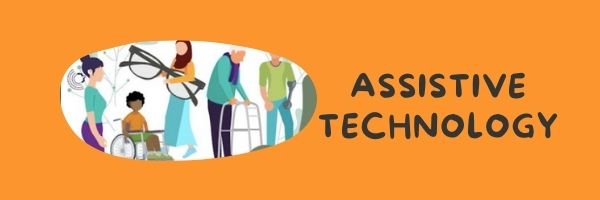It wasn't all that easy getting his power wheelchair. He and his mum had to go all the way to the AAT (the Administrative Appeals Tribunal) to get this chair funded by the NDIA. Below we explore Assistive Technology (AT) a bit more and some tips for getting all your evidence together to get the piece of equipment you need. What is Assistive Technology (AT): One way to understand assistive technology is to think of it as a bridge between a person with disability and their environment. For example, a wheelchair can be a bridge to get around in the community. Generally, AT are gadgets, tools, pieces of equipment that assist people to do something more easily or do something that without it, they could not do because of their disability. The best starting point to thinking about AT and what the NDIA might fund, is to think about your goals and what you will need to help you to achieve those goals. Perhaps you need to be able to move around in your community and you need a wheelchair to help you to do that. Perhaps you want to be able to help other people to understand you, and you need an app that helps you to communicate. Or perhaps you want to be safe when you have a shower, and a shower chair would help you to do that. When thinking about using your NDIS Plan to help you to buy the AT you need, it helps to think about it in terms of risks and cost. Low risk (Low cost) items: There are items that the NDIA considers to be low cost and low risk. Many people might find a reference to those in their plan in relation to core funding. The NDIA says this includes items that are:
This might include items such as:
Many of these AT tools cost below $1500. Generally speaking, you do not need an assessment from an allied health professional. (For items over $500, we recommend that you get an email or something from your allied health specialist saying why this item is necessary and reasonable for you and that you need it because of your disability. This email or letter doesn’t need to be very long, just a couple of paragraphs). If you have ‘low cost, low risk consumables’ in your plan and your plan is agency managed you need to go to a NDIA registered provider to buy the piece of equipment (your allied health person can help with that). If you have ‘low cost, low risk consumables’ in your NDIS plan and it is plan managed, we recommend that you have a chat with your Plan Manager first and work out the easiest way to get the item you want. You can then also find out if there is a price limit on the specific item. Being plan managed, you can then buy what you need from pretty much any shop, you don’t have to buy it only from a shop that is registered with NDIA. If you are self-managing your NDIS plan, you can also purchase it from any shop. Please note that some low-cost AT items are considered high risk and, even if you are not sure if it is or not, you really should get advice from an allied health professional about purchasing your AT. Higher risk (and higher cost): Higher risk items include products that
Most higher risk items also come with a higher price tag. But some low costs items can also be high risk, so it’s important to talk this through with an allied health professional who is trained to know about them. If you think you need a higher risk or higher cost AT item, you will generally need to have it specifically included in your Plan. To get it into your Plan you generally need a report (and a quote) from an allied health professional saying why you need this AT. It’s also important that you remember to also get funding to:
0 Comments
|
|
For more information about the NDIA and our registration please click here
NDIS Registration Number: 405 003 6622
|
Contact Usphone:
Donna 0432 414 210 Barbel 0468 312 515 Diana 0450 739 514 PO BOX 882 Marrickville NSW 1475 |
SoverACKNOWLEDGEMENT
We acknowledge that our work is conducted on the lands of Aboriginal and Torres Strait Islander nations.
We pay our respects to Elders past, present and future, for they hold the memories, traditions, Cultures and aspirations of Aboriginal and Torres Strait Islander communities. Sovereignty was never ceded.
We acknowledge that our work is conducted on the lands of Aboriginal and Torres Strait Islander nations.
We pay our respects to Elders past, present and future, for they hold the memories, traditions, Cultures and aspirations of Aboriginal and Torres Strait Islander communities. Sovereignty was never ceded.
futures in sight - copyright: 2024

 RSS Feed
RSS Feed

